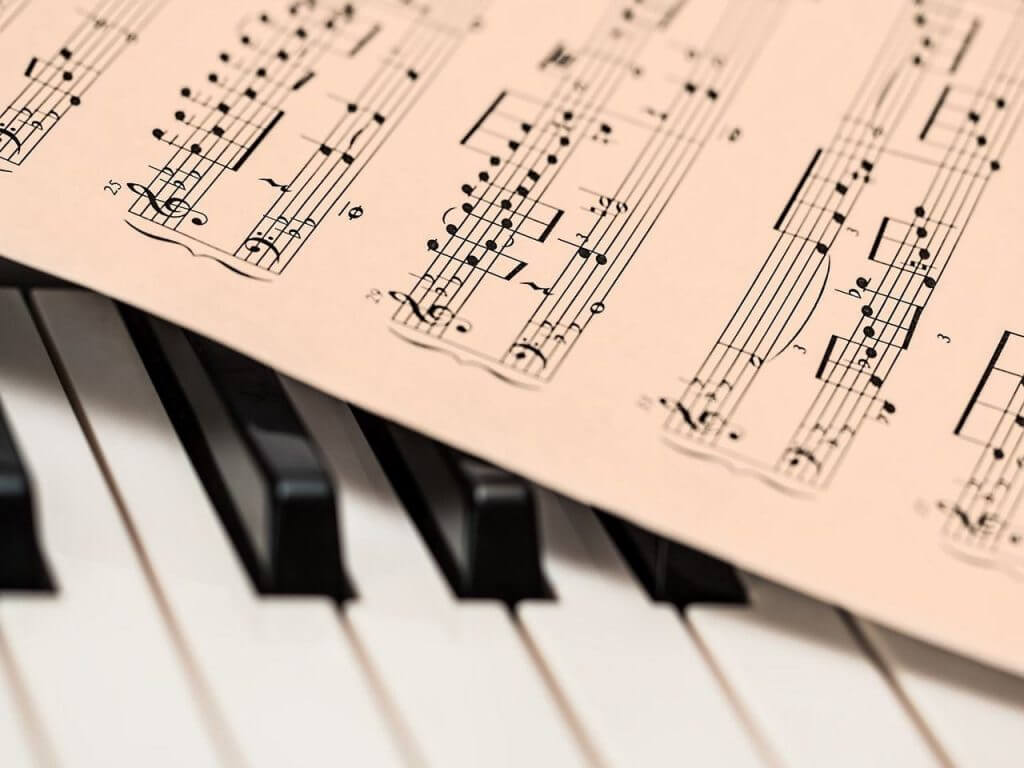The 4 keys on how to teach yourself piano
The 4 Keys on How to Teach Yourself Piano
Finally, you have decided to sit on the piano and learn how to play it! If you are a true blue beginner, do not let the 88 keys intimidate you. When you start to learn how to read musical notes and familiarize yourself with the keyboard…. fun begins!! The moment you hear yourself play a piece no matter how simple it may be… you’d wish you’ve done this sooner. Here is a step by step guide you can use to teach yourself piano.
1. Familiarize yourself with the piano keys and pedals

The white keys are for the major notes (C, D, E, F, G, A, B) on the scale while the black keys are for the sharp notes and flat notes.
Look for the pair of black keys in the middle of your piano, locate your middle C and put your right thumb on it and play a scale with your right hand. Play a scale with your left hand too, beginning with your pinky finger until you touch middle C. Familiarize yourself with the feel of the keys and the sound of the notes.
Now, step on the pedals while you’re at it. You’ll notice that there’s a distinct sound change when you do that. The pedal on the left, softens the volume and the tone while the pedal on the right sustains and resonates the sound.
2. Learn how to read music sheets
At first glance, a piano piece can be too confusing for beginners but once you understand the meaning and value of every component on the sheet you will appreciate the beauty of playing the piano all the more.

Do not get frustrated when you look at a music sheet for the first time and know nothing about the lines, symbols and notes you see. Be patient. Learning to play the piano on your own is challenging but rewarding. Believe in yourself that you will be able to teach yourself piano in time.
Fortunately for you, the web has a wide array of resources for free and paid online piano tutorials. Video tutorials are available on YouTube, so learning to read notes won’t be as difficult as you thought.
Make sure you check a lot of sites, learn the basics and do your homework before you try playing Sam Smith’s latest song. To get you on track, here are the basic parts of a music sheet that you need to know:
- Ledger lines – These are five equally spaced lines where the notes are written.
- G-clef – Also known as the treble clef. You can find this on the left side of the ledger lines. It indicates the notes to be played by the right hand.
- Bass clef – This indicates the notes played by the left hand.
- Time signature – These are numbers written after the Clefs. This tells you the speed or beat that you should follow when playing the piano piece.
3. Pick a song and play it
This is where your excitement builds up. When you can read the notes on the music sheet correctly, it’s time to up the ante and begin playing.
There are many sites offering piano pieces for beginners. These are sheets specially designed to make learning how to play the piano fun. The notes are bigger, the melody and tempo are kept simple so the pianist can easily play the piece.
Often times, beginner sheets are played with the right hand only. The purpose of this is to improve the ability of the student to read notes and play them on the piano. As your skills progress, you can choose piano pieces that will require both your hands to play and eventually use music sheets with a higher degree of difficulty.
4. Study and practice
Set a fixed schedule for your piano lessons and stay committed to it. Keep practicing so you can improve your piano playing skills. Practice with your favorite songs and learn new ones.
Work on improving your speed by playing the scale up then down as many times as you wish. Do this at the start of your piano session to warm up your fingers. It is important to improve the dexterity of your fingers because you will need this for more complicated piano pieces.
Teach Yourself How to Play Piano
Teaching yourself piano can be frustrating at times but the key to getting better is to never give up. It is important to be in the right frame of mind when learning something new.
As long as you keep at it with consistency, dedication and commitment you will accomplish your dream of becoming a piano player.
Do check out our music blog for free piano lessons and piano tips
Sign up for newsletter

Copyright © 2019 Alternate Tone Pte Ltd. All rights reserved.
CONTACTS
Alternate Tone Pte Ltd- Music School
29b Seah St - Singapore - 188385
Tel: +65 8115 9378
Email: info@alternatetone.com
Open: Mo-Fr 12:30-21:30
Sa 10:00-18:00

0 Comments